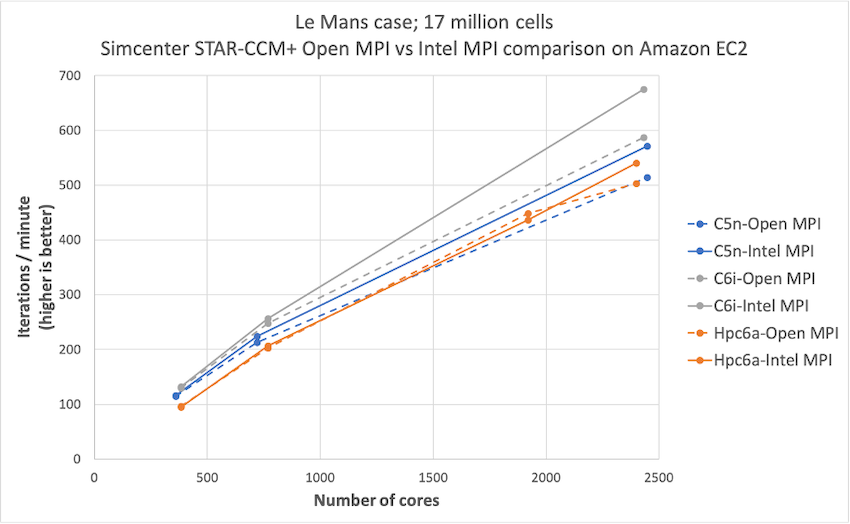AWS HPC Blog
Category: Compute
How Thermo Fisher Scientific Accelerated Cryo-EM using AWS ParallelCluster
In this blog post, we’ll walk you through the process of building a successful Cryo-EM benchmarking pilot using AWS ParallelCluster, Amazon FSx for Lustre, and cryoSPARC (from Structura Biotechnology) and explain some of our design decisions along the way.
Efficient and cost-effective rendering pipelines with Blender and AWS Batch
This blog post explains how to run parallel rendering workloads and produce an animation in a cost and time effective way using AWS Batch and AWS Step Functions. AWS Batch manages the rendering jobs on Amazon Elastic Compute Cloud (Amazon EC2), and AWS Step Functions coordinates the dependencies across the individual steps of the rendering workflow. Additionally, Amazon EC2 Spot instances can be used to reduce compute costs by up to 90% compared to On-Demand prices.
Getting Started with NVIDIA Clara Parabricks on AWS Batch using AWS CloudFormation
In this blog post, we’ll show how you can run NVIDIA Parabricks on AWS Batch leveraging AWS CloudFormation templates. Parabricks is a GPU-accelerated tool for secondary genomic analysis. It reduces the runtime of variant calling on a 30x human genome from 30 hours to just 30 minutes, and leverages AWS Batch to provide an interface that scales compute jobs across multiple instances in the cloud.
Understanding the AWS Batch termination process
In this blog post, we help you understand the AWS Batch job termination process and how you may take actions to gracefully terminate a job by capturing SIGTERM signal inside the application. It provides you with an efficient way to exit your Batch jobs. You also get to know about how job timeouts occur, and how the retry operation works with both traditional AWS Batch jobs and array jobs.
Bayesian ML Models at Scale with AWS Batch
Ampersand is a data-driven TV advertising technology company that provides aggregated TV audience impression insights and planning on 42 million households, in every media market, across more than 165 networks and apps and in all dayparts (broadcast day segments). The Ampersand Data Science team estimated that building their statistical models would require up to 600,000 physical CPU hours to run, which would not be feasible without using a massively parallel and large-scale architecture in the cloud. AWS Batch enabled Ampersand to compress their time of computation over 500x through massive scaling while optimizing their costs using Amazon EC2 Spot. In this blog post, we will provide an overview of how Ampersand built their TV audience impressions (“impressions”) models at scale on AWS, review the architecture they have been using, and discuss optimizations they conducted to run their workload efficiently on AWS Batch.
Running cost-effective GROMACS simulations using Amazon EC2 Spot Instances with AWS ParallelCluster
In this blog post, we cover how to run GROMACS – a popular open source designed for simulations of proteins, lipids, and nucleic acids – cost effectively by leveraging EC2 Spot Instances within AWS ParallelCluster. We also show how to checkpoint GROMACS to recover gracefully from possible Spot Instance interruptions.
Introducing the Spack Rolling Binary Cache hosted on AWS
Today we’re excited to announce the availability of a new public Spack Binary Cache. In a collaboration, between AWS, E4S, Kitware, and the Lawrence Livermore National Laboratory (LLNL), Spack users now have access to a public build cache hosted on Amazon S3. The use of this Binary Cache will result in up to 20x faster install times for common Spack packages.
Encoding workflow dependencies in AWS Batch
This post covers the different ways you can encode a dependency between basic and array jobs in AWS Batch. We also cover why you may want to encode dependencies outside of Batch altogether using a workflow system like AWS Step Functions or Apache Airflow.
AWS Batch updates: higher compute utilization, AWS PrivateLink support, and updatable compute environments
In this post, I cover some of the recent updates to AWS Batch, including improvements to job placement, addition of AWS PrivateLink support, and the new capabilities to update your AWS Batch compute environments.
Simcenter STAR-CCM+ price-performance on AWS
Organizations such as Amazon Prime Air and Joby Aviation use Simcenter STAR-CCM+ for running CFD simulations on AWS so they can reduce product manufacturing cycles and achieve faster times to market. In this post today, we describe the performance and price analysis of running Computational Fluid Dynamics (CFD) simulations using Siemens SimcenterTM STAR-CCM+TM software on AWS HPC clusters.









